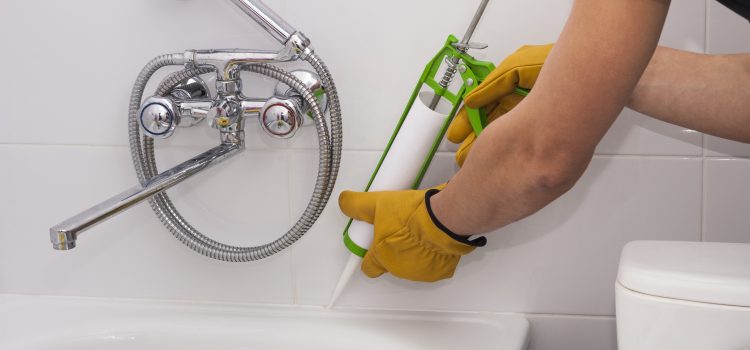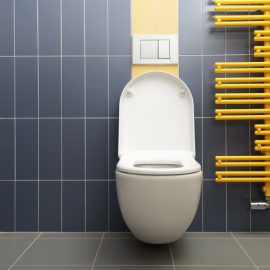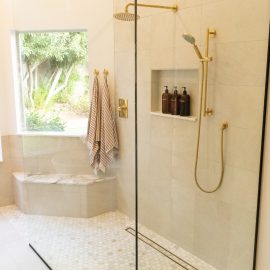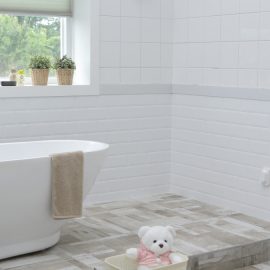
Plain and Simple:
Even if you are starting from scratch, installing a bathtub doesn’t have to be that daunting. And, today, through this step-by-step article, you will learn how to install a bathtub and make it solid as a rock.
Ready?
Stage One:

Choose a tub that will fit in the available area. Measure the length and breadth of the alcove where the tub will be installed. Also, measure the height and breadth of your bathroom doorway to ensure that the tub will fit through! Bring your measurements to a home improvement retailer to help you make a decision.
To make installation easier, if you’re replacing an old tub, pick a new tub with a comparable configuration and make sure the drain and faucets are on the same side and in nearly the same area.
Make certain that your tub comes with all of the necessary faucets, drains, and accessories. Frequently, water handle(s), a faucet and the drain, which includes the drain chute, strainer, strainer cover, trip lever, stopper, linkage, and overflow drain cover, are necessary.
Stage Two:
Install the tub in the alcove once it has been dry-fitted. Place the tub in the specified spot to confirm it fits. Check sure the drain hole in the tub’s bottom corresponds to the P-trap on the floor underneath the tub. Also, make sure you have the proper fittings to connect the water supply lines to the faucet you ordered.
After you’ve ensured that the tub fits, place it somewhere secure so you can proceed to add a ledger board.
Take care not to scratch or otherwise damage your new tub!
Stage Three:
Create a ledger board. Cut a 2 by 4 in (5.1 by 10.2 cm) board to the length of the wall where the tub’s long edge will be placed. Measure the height of the tub’s lip, or flange, and write it down on the back wall. When the tub is level in the alcove, screw the ledger board to the wall studs using a drill so that the top of the ledger board is just below the flange.
Stage Four:
Secure the drain to the tub before you put it in place. Wrap plumber’s putty around the bottom of the strainer (the section of the drain visible on the inside of the tub’s bottom) and press it into the tub from the inside. Install a gasket around the strainer from the outside of the tub’s bottom, then screw it to the drain chute, which is a lengthy pipe that incorporates the overflow drain.
Stage Five:
Insert the trip lever stopper and connection through the tub’s overflow drain hole. Secure the overflow lid with the trip lever to the inside of the tub using a screwdriver.
Stage Six:
Now, place the tub in the alcove with care so that the drain sits above the drain opening on the floor. A level should be placed on either side of the tub. If there are any uneven locations, install hardwood shims below the tub and glue them in place.
Some manufacturers may recommend spreading mortar on the floor and setting your tub on top of it to lock it in place.
Stage Seven:
There will be a slight flange, or vertical lip, around the outside of the tub. To fasten the flange to the studs in the wall, follow the manufacturer’s instructions. In most situations, you may use a hammer to drive roofing nails through the flange to fasten it to each stud in the wall.
Stage Eight:
The panels that make up the surround protect the wall around your tub from moisture and mildew. First, dry-fit the surround and mark where the accessories, such as the faucet and water handles, will go. Check that the faucet is aligned with the water lines in the wall. Then, using a jigsaw, cut off the accessory apertures.
Stage Nine:
On the ledge adjacent to the flange, run a bead of silicone caulk around the full circumference of the tub. Then, gently place the surround over the silicone caulk. Next, screw the surround into each wall stud using a drill. A screw should be used every 6 inches (15 cm) up the length of the surround.
Stage Ten:
Screw the faucet into the water line coupling through the hole in the surround. The strainer cover should then be screwed over the drain opening on the tub’s floor. Add any additional accessories you require, such as handles, if they are not included with your faucet.
Stage Eleven:
Insert the drain chute into the P-trap located beneath the tub. If the drain chute and the P-trap do not properly match, you may need to use PVC pipe to connect them. If this is the case, dry-fit the components first and use ABS cement to bind the PVC pipe to the chute and P-trap to keep it from coming free.
Stage Twelve:

Apply a bead of silicone caulk to the tub’s exterior edge where it touches the floor. To prevent water from seeping in between the tub and the floor, make sure it joins at both outer corners. With your finger or a moist towel, smooth out the bead.
Allow at least a full day for the caulk and other adhesives to dry. Then, turn on the water and inspect for leaks.
Finally….a soak in the hot tub after a long, tiring day at work!




Pingback:DIY your own Bath bomb - Thecraftspersonblog